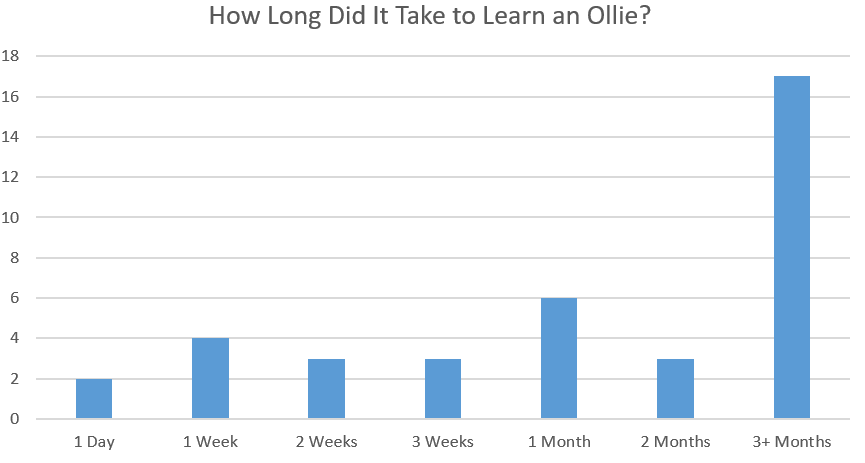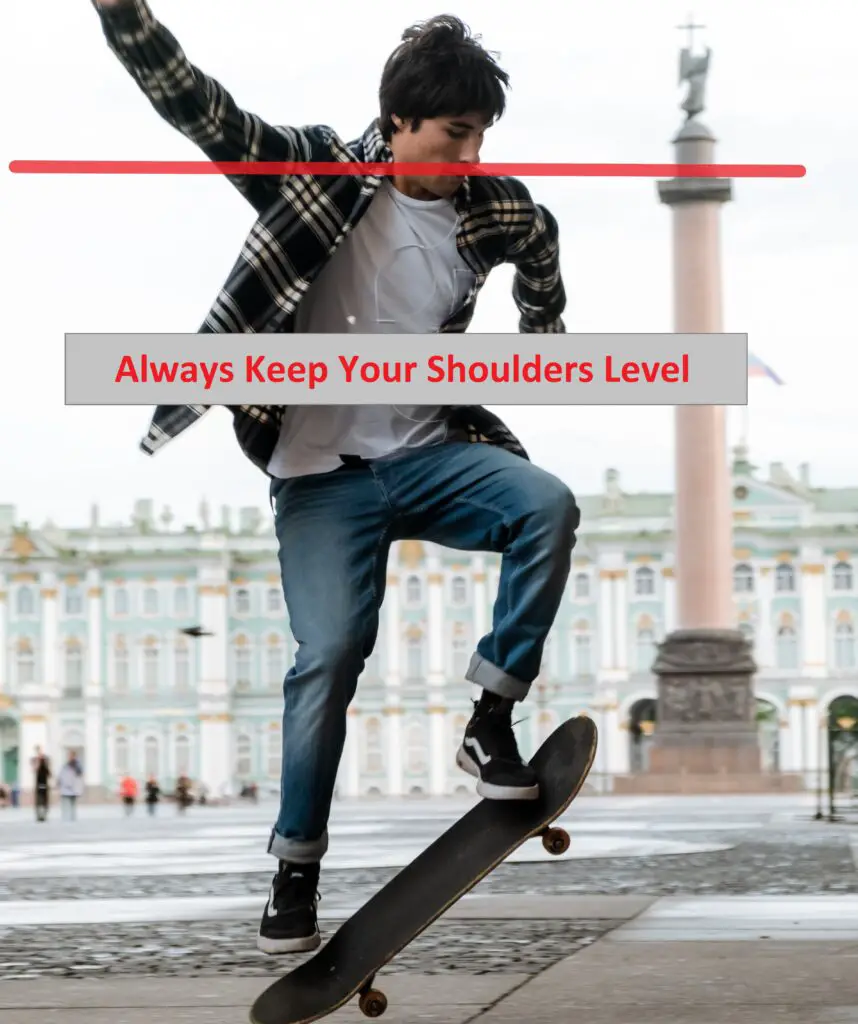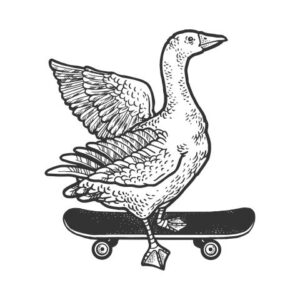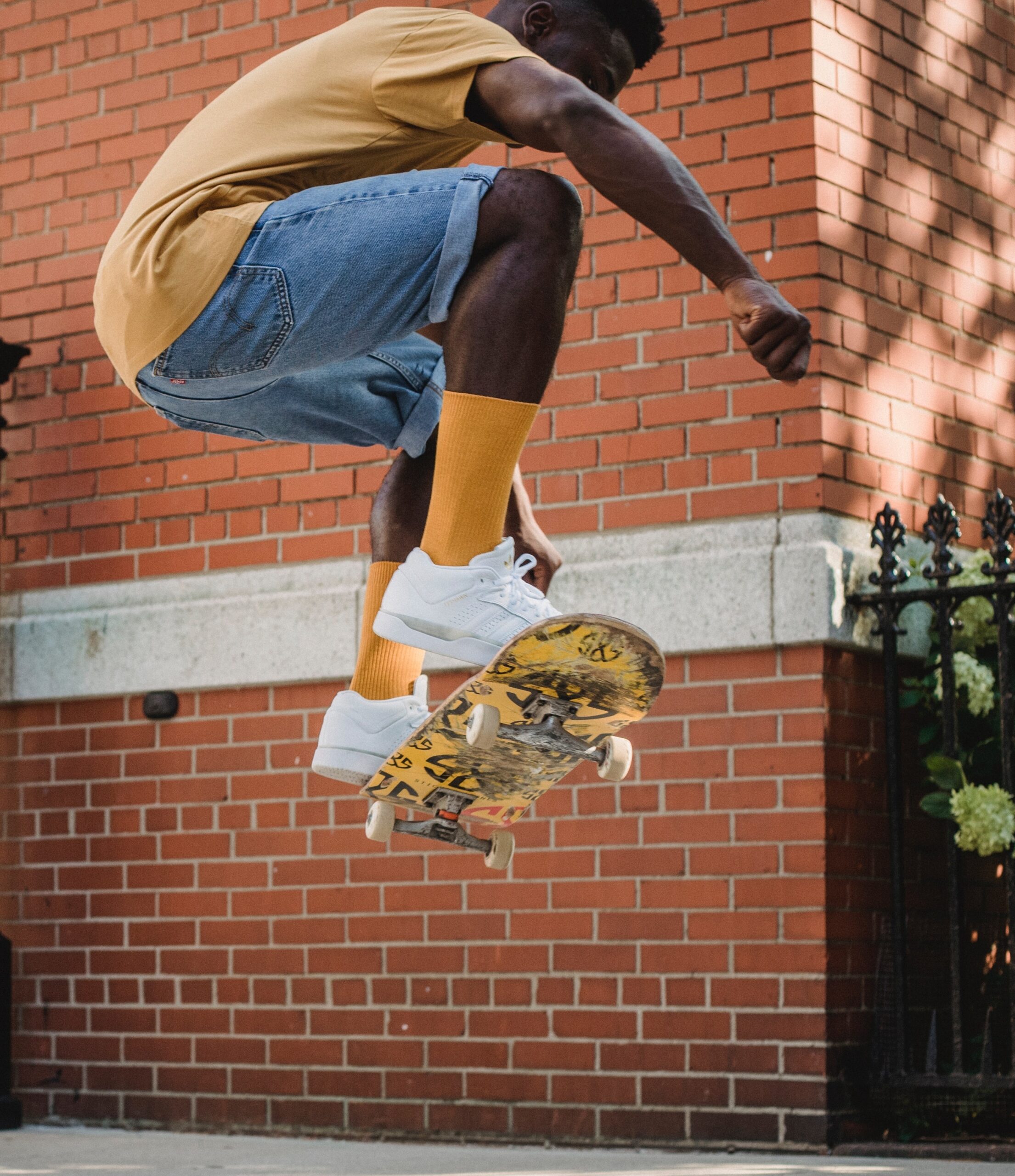Learning an ollie can be pretty brutal. Most beginners expect that an ollie will come quickly. It is the simplest skateboarding trick right?
Well, no.
How Long Does Does It Take to Learn an Ollie?
The ollie is actually a very complex maneuver that requires precise timing and body coordination. It is anything, but easy regardless of what someone at the skatepark or your friend told you.
Learning to Ollie takes most skaters at least a month. 45% of skaters took 3 or more months to learn an ollie and 68% took at least a month to learn how to ollie. The ollie is actually a very complicated maneuver that takes practice and persistence to master. Most skaters will take many more months before their early ollie is clean and high.
These results are from an online poll we conducted. The data is not perfect. Some of this refers to simply getting wheels off the ground for the first time and others are referring to be able to ollie consistently. Regardless this should give you an idea of how long this “simple” trick takes.

If you are struggling with your ollie, we polled skaters on the most common ollie mistakes and presented solutions in our guide here.
When Should I Learn to Ollie?
So you now understand how long it takes to land an ollie. You hopefully also appreciate how long it takes to learn. So when should you start learning?
You should start learning to ollie as soon as you can ride your skateboard comfortably. The reason for this is that it takes so long to learn the ollie and the ollie is a gateway to other tricks. If you want to be doing any flip tricks then you must learn to ollie first. However, you can and will learn other tricks concurrently like the manual, shuvits, and kick turns.
So I recommend starting to learn the ollie as soon as you can comfortably ride your skateboard. It will take hundreds of attempts to master the ollie so you might as well get started sooner than later. Keep in mind there aren’t any exact orders to learn tricks. It is true that the ollie is a prerequisite for many other tricks like kickflip and heelflip, but I have a nice smooth ollie and have sloppy shuvits. I simply have never really practiced them.
When you’re ready to actually learn an ollie, you can use my complete beginner’s guide here with pictures and video.
Common Ollie Mistakes
Turning Your Shoulders
Turning your shoulders is a problem that will crop up again and again as you keep skateboarding. If you are moving, your mind will want to subconsciously turn your shoulders so that you “face” forward. This is in anticipation of a fall and for most people is very unconscious.
If you turn your shoulders though, you also turn your board which results in you not landing straight and your momentum will throw you forward. Wheels can’t roll sideways.
Solution
Be aware of your shoulders are you ollie and consciously stop yourself from turning. At first, this will be conscious, but will soon be unconscious. It just takes muscle memory and practice. I still do this from time to time and you will too especially when learning new tricks. This is an easy issue to correct as it only takes because conscious of your shoulders turning.
Not Sliding Your Foot
This is the basic movement of the ollie. You pop your board up and slide your front foot up against your board. This catches the board and lifts it up. This motion comes easily for most people. If your foot isn’t catching your board, you are more likely not popping it up enough, not keeping your shoulders level, or are not jumping at all.
Solution
The best way to get your foot used to this motion is to slide it up against your board while simply standing on the tail of your board stationary. Keep periodically practicing this sliding motion with your front foot while stationary on the ground and then try it while moving in cycles of about every 10 to 15 minutes.
Timing Issue
The timing of the ollie is quite difficult to master. You must flick down your tail to pop the board while near-simultaneously jumping and sliding your front foot forward and up. You then need to level out the rising board by “catching” it will your back foot.
This sounds hard and it is. Until you get the muscle memory you need at least.
Solution
Take a video of yourself practicing your ollie. You can prop up your phone and record with that. Watch the video in slow motion and make adjustments based on the video.
A good video from a side angle can illuminate much more than simply guessing what your issue is or even asking a friend. Being able to slow down the video and distinctly see yourself from a third-person view is incredibly helpful.
Not Flicking You Board’s Tail Hard Enough
Most beginners have a misunderstanding about how they should be jumping off of the board. You need to flick the tail down and jump from that same motion. You will not be jumping off of the ground. You will already be airborne when the skateboard’s tail makes contact with the ground.
Unfortunately, many beginners try to put their tail to the pavement and then jump while their tail is resting on the pavement. This will not let your board “pop up” and you will not be able to catch it with your front foot.
Solution
Practice jumping while flicking your tail down while stationary. Your board should pop up to be almost vertical if you don’t catch it with your front foot. Once you have a feel for this try it while moving. Don’t worry about sliding your front foot up at this point and check if you are jumping from the ground or not by videoing yourself.
Leaning Back/Not Keeping Your Shoulders Level
This is a big issue for people who are doing an ollie while moving or are trying to ollie on a ramp or while skating downhill. Your shoulders need to be level with the surface you are skating. Too many people lean back away from their board as they are afraid of falling.
This is often done subconsciously and will hinder your ability to land your ollie and other tricks.
This is such a common problem that I wrote a specific article about turning your shoulders and explaining how to ollie straight that you can find here.
Solution
Fixing this is simply being conscious that your shoulders are not level while you are doing an ollie. Once you are conscious of this, you can focus on not leaning forward or back during your ollie. It will take a couple of weeks of consciously keeping your shoulders flat to make it muscle memory. Once this is muscle memory then you’re golden.

Why is Doing an Ollie So Hard?
Skateboarding has a serious and unforgiving learning curve that most people don’t appreciate unless they try skateboarding themselves. It can take people on average at least a month to learn an ollie and almost half of beginner skaters take three months or more to learn this “simple” trick.
An ollie is anything but a simple trick. Performing an ollie requires precise body coordination and immaculate timing of these motions. Unwanted body motions such as turning the shoulders or leaning forward can ruin the maneuver. There is a very small margin of error when doing an ollie.
I often think of skateboarding as requiring the precision and coordination of ballet dancers while also taking the slams and hits of a rugby or football player. Due to the sport’s reputation, I don’t think non-skaters really appreciate how difficult skateboarding can be. If you are doing tricks, then you will struggle for months and years to land tricks cleanly.
It is fair to say that skateboarding has one of the steepest learning curves out of all sports. I say this as an athletic person who has tried and actively participates in many hobbies and team sports. Skateboarding is the hardest and most unforgiving sport that I’ve tried. This includes baseball, soccer, caving, rock climbing, windsurfing, weightlifting, and a couple of other sports I’ve dabbled in.
The time it takes to simply do the basics of skateboarding is much longer than these other sports. Try to appreciate this fact when you start skating. You’re trying to do something that is incredibly difficult and will take time to learn. So don’t get discouraged and make sure you have fun! 🙂
Is skateboarding the hardest sport? Check out our article on why we think it is.
Why Should I Learn to Ollie?
If you can ollie, the number of tricks you can learn increases exponentially. Suddenly flip tricks and grinds are possible. You can maneuver the skate park and obstacles that you couldn’t before. You can ollie up ledges and onto manual pads. You can skate stairs and ollie over objects. You can learn to wallride and do stalls.
An ollie seriously opens up the world of skateboarding. You can find entire videos of people creatively skating with literally only an ollie. Even if you are only cruising, an ollie allows you to smoothly navigate obstacles and hop over speed bumps.
Braille probably makes my favorite explanation of how to ollie and they go into detail with each step.
The gist is that you should learn to ollie. Check out this ollie-heavy skate video to inspire you. Mind you this guy falls a lot too, but still.
In What Order Should I Learn Tricks?
Once you have learned to ollie, you should be a bit more comfortable on your skateboard. From this point, many new tricks are open for you to learn. These include kickflip, pop-shuvit, heelflip, backside 180, frontside 180, and frontside pop-shuvit. There are many more tricks to learn, but these are the beginner tricks that many people move onto directly after learning to ollie.
Honestly, there is no set order of tricks you should learn. Tricks come in groups of difficulty and what you learn first in that group is up to you. Some tricks will come easier for others. The easiest for me to learn of this first group were the frontside 180 and pop-shuvit. Honestly, once you can ollie then you are basically already to the point where you can do these tricks.
Below is a general table of the groupings by difficulty for these tricks. This might be as close to an order to learn certain tricks as you can get. Learn a few of these tricks in each group before trying a trick in the next group up.
| Group | Tricks to Learn |
| 1 | Manual, shuvit, front shuvit, kick turn, revert, ollie, caveman |
| 2 | pop-shuvit, frontside 180, kickflip, backside 180, heelflip, front pop-shuvit, boardslide |
| 3 | varial flips, tre flip, 50-50 grinds, grind variations |
| 4 | wall rides, 360 spins and variations, varial flip variations, whatever else |
These are the general groups of tricks by difficulty. It is not uncommon to be stuck between different groups and these groups aren’t really exact. This is mostly my opinion and free to let me know if you disagree. It takes a long time to transition between groups and often you will have a certain trick or two that you struggle with while other tricks come easily.
This list also is for street and flat ground skating. I don’t include any transition tricks.
Just don’t get discouraged and keep pushing yourself to get better. As long as you’re better than you were then that’s perfect!
Conclusion
So in conclusion, skateboarding is hard and it takes a long time to learn even the “simple” tricks. The reality is that there aren’t many simple skateboarding tricks. The sport is extremely difficult and technical and this is something that non skateboarders don’t really appreciate.
Learning to ollie on average takes most new skaters at least a month to learn and many take three months or more. You should start learning to ollie as soon as you can ride comfortably as it’s the gateway to many many more tricks and takes so long to learn and master.
An ollie is much more complicated than it appears, but there are good reasons to learn it. An ollie will exponentially increase the number of tricks you can learn and do. You will be able to start doing flip tricks and grinds. With an ollie, you can also maneuver many more obstacles than before and get more creative with your skating.
So do you have the patience and dedication it takes to learn to ollie? I think you do! 🙂
Thanks for reading and look out for more articles from Board and Wheels.



